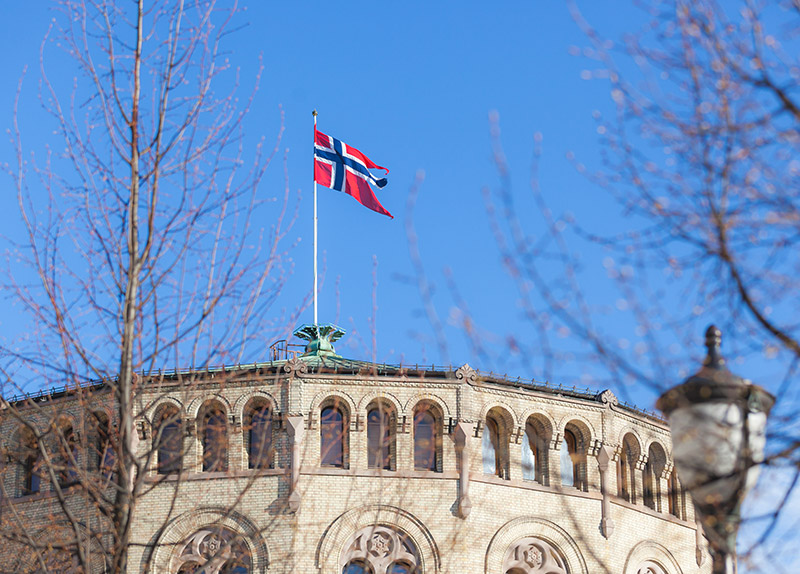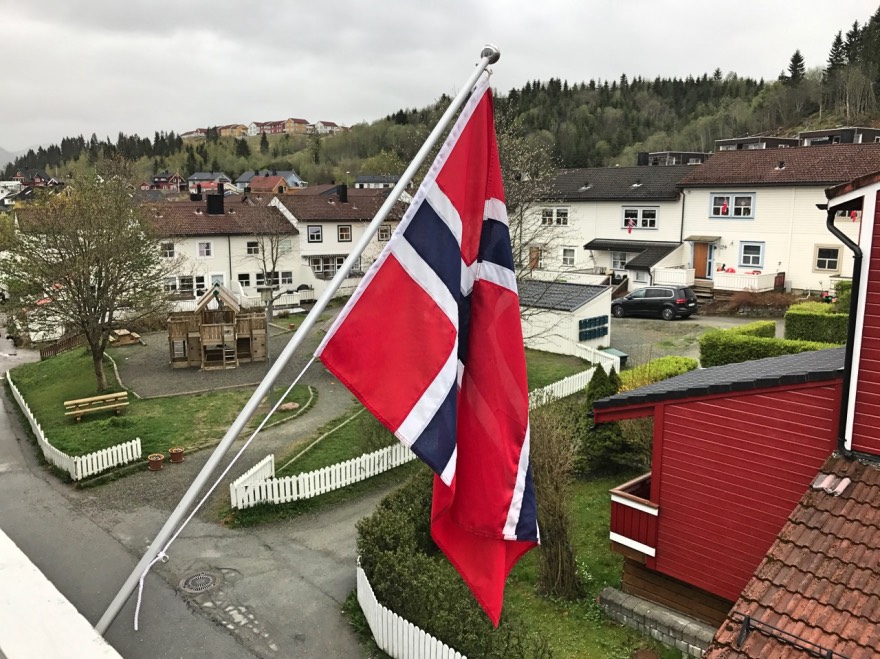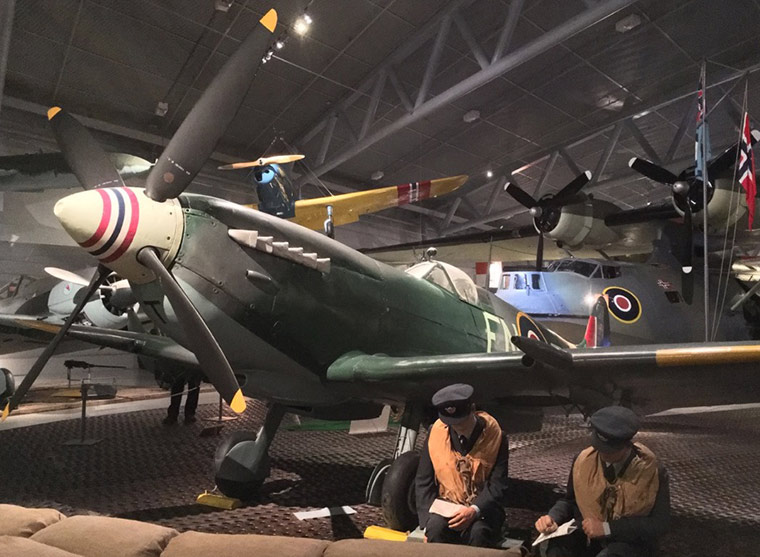The 8th of May is Liberation Day, marking the end of Norway’s occupation during World War II. We take a look back at what happened, and how the day is marked today.
Liberation Day, known in Norwegian as Frigjøringsdagen, is marked every year in Norway on the 8th of May. It also serves as Norway's Veterans Day.

The day is also celebrated in other countries as the effective end of the war. It is known in the UK as Victory in Europe Day, or VE Day. In Russia, the day is marked on 9 May, due to the time difference.
It marks the anniversary of 8 May 1945, when Nazi Germany forces withdrew from Norway and World War II came to an end. The occupation had begun on 9 April 1940, so Norway had been occupied for more than five years.
The end of occupation
On that day in 1945, the people of Norway took to the streets to celebrate their long-awaited freedom. In the following days, soldiers and POWs returned home, and the celebrations continued.
Following the surrender of National Socialist Germany, German forces in Norway were sent back to Germany. The Allies feared that the German army in Norway would refuse to capitulate. At the time, the thought that Germany would voluntarily give up control of Norway, which they had heavily fortified and stationed hundreds of thousands of soldiers, was by no means a given. But the commander-in-chief in Norway received an order from the new national president, Karl Dönitz.
The celebrations reached their peak when King Haakon returned home to Oslo on the 7th of June. It was an iconic moment in Norwegian history. So much so, Jo Nesbø references the incident as an important moment in his Harry Hole novel, The Redbreast.

One of Norway’s flag days
While not a public holiday, Liberation Day is an official flag day. You can expect to see the Norwegian flag flying high on all public buildings and from many private houses and apartment balconies.
The first time the day became a flag day was in 1960, when the government decided to mark the 15th anniversary of the end of the war.
That same year, a poll showed overwhelming support amongst the population for a permanent flag day. The 8th of May was then adopted as a flag day by royal decree in 1962.
Norway's Royals play an important role
The day is also marked with speeches and events throughout the country. The Norwegian Royal Family has a long tradition of participation in such events. Of course, this year's events cannot take place as normal because of the coronavirus restrictions. But that won't stop many people marking the occasion privately.
Two years ago, King Harald took part in a ceremony to mark the occasion at Akershus fortress in Oslo. The Parliament's President, the Prime Minister and the Defense Minister also took participated.
The King handed out ten medals to people in honour of their military service at a special ceremony during the afternoon, following a church service and laying of a wreath. After the King arrived, a column of Norwegian fighters flew over the fortress in formation.

The resistance movement
While conventional armed resistance to the occupation ended after just a couple of months, an underground resistance movement operated throughout the occupation period.
The resistance took the form of military defence and counter-attacks, in part to allow the legitimate government of Norway to evade capture and escape to London. There was also armed resistance and famous acts of sabotage, most notably the Heavy Water War that played out in Telemark.
In Oslo on the grounds of Akershus Fortress, Norway's Resistance Museum focuses on this period. Also known as the Norwegian Home Front Museum, the museum displays equipment, photos and documents from the war years.
Read more: The History of Norway in World War II





In the Summer of 1944 my mother, then 9 years old, was evacuated from Bergen by the Red Cross and sent to live on a small farm, with strangers, above Etne. She remembers the day when they saw the Norwegian flag flying down in the valley. It could only have meant one thing.
The Museum of Post War Reconstruction in Hammarfest tells of events after WWII in Finnmark and Northern Troms: the liberation of Eastern Finnmark, the scorched earth policy, forced evacuation and reconstructiion after the war. Very .hard times
Hi
Has Tromso got any special events planned for liberation day next year
Thanks
Simon
One of my neighbors passed away. In his house was a framed citation from “the people of Norway wish to thank you.” The citation was for his father, Gerhard Strom, for taking part in the Liberation on May 8, 1945. I saved the citation and would like to send it to some group that would preserve it and its memory. Please let me know if you can help.
Have you contacted the Sons of Norway? https://www.sofn.com/
If you are in the USA, you could also contact the National Nordic Museum in Seattle, WA. https://www.nordicmuseum.org/
Vito,
I have just today seen your message.
Today, May 8th 2022 is the anniversary of the Liberation of Norway.
Thank you for preserving the historic document presented to your neighbor, Gerhard Strom. My uncle Fred was presented with the same award.
My uncle was in the First Special Service Force, a joint American/Canadian special forces super commando unit which was the predecessor of today’s Special Forces.
They were created and trained specifically to jump into Norway to destroy the Heavy Water producing Hydro-Norsk facility in Rjukan which the Germans had commandeered after invading and occupying Norway.
The Hydro-Norsk facility was destroyed by a Norwegian resistance team known as “The Heroes of Telemark”.
The First Special Service Force was reassigned the task of breaking the
“Winter Line” in the Battle for Monte La Difensa, by scaling the cliffside of the mountain and overcoming the German artillery unit and spearheading the allied forces advance to Rome.
In December of 1944 the Force was disbanded and reformed into the 474th Infantry Regiment who finally took part in the Liberation of Norway.
There are several groups of the descendants of those veterans. Please feel free to contact me for further information.
Sincerely,
Anthony
Vito,
The 474th Infantry Regiment was formed after the disbandment of the
First Special Service Force. This occurred on December 5th 1944. On 26-January 1945 the 99th Infantry Battalion (Separate) also known as “The Viking Battalion”, joined the 474th Infantry Regiment. Gerhard Strom was a member of the 99th.
Anthony
Would love to hear of any remaining nazi fortifications in norway that can be visited
Akershus Fortress was great until I reached the Resistance museum, l couldn’t finish the tour. Such brave citizens. A descendant of Norwegian heritage now in NEW Zealand.
My father the late Sergeant Cecil Bridges was also given this citation, he died in 1991 in Mansfield Nottinghamshire. It is framed and now proudly hangs in the lounge of my bungalow in Mansfield. He was in the Royal Engineers and served in Gibralter before taking part in the D Day landings, he faught through France and served in Belgium where he was befriended by a Belgium family and he kept in touch with them after the war. He moved onto Norway to help with the liberation and finally arrived back in England towards the end of August 1945.